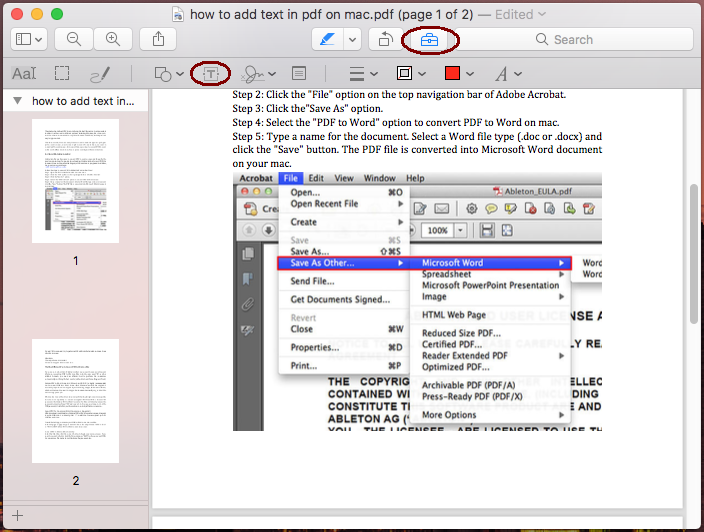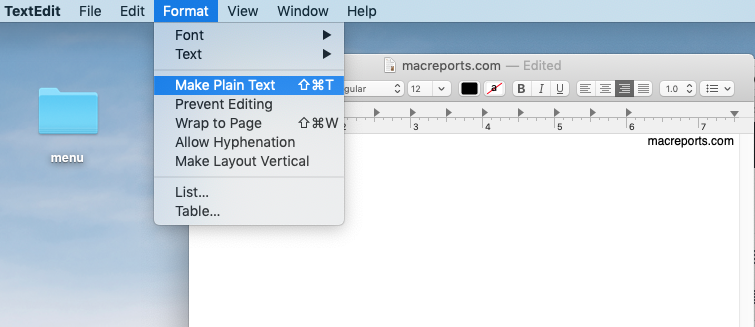- Mac Terminal Create Text File
- Create Text File Windows 10
- Mac Create New File
- How To Create A New Text File In Mac
Magic mirror forum. You can create a text file on your computer with a text editor. An example of a text editor is Notepad, which is included with Microsoft Windows.
NoteWhen we refer to a 'text file' we are talking about a plain text file without any text formatting (e.g., bold), images, different fonts, font sizes, etc. If you need to create a more rich document with any of these features see: How to create a document.
TipCreate an HTML file. In the TextEdit app on your Mac, choose File New, then choose Format Make Plain Text. Enter the HTML code. Choose File Save, type a name followed by the extension.html (for example, enter index.html), then click Save. My method to make an empty text file is crude but simpler: Simply create a new text file in TextEdit, then save as Rich Text Format 'whatever.rtf' Then press cmd-shift-T to convert it to plain text. Say yes when the dialog box pops up asking to confirm change. And you're done. Once you have changed it to a.txt file. To do this, you can either use Mac(OS X)'s built-in features for dragging text, or you can even easily create text clipping on mac from the text you would like to copy. Dragging Text In Mac (OS X): As said before, copying and pasting on the clipboard is actually a basic method to transfer text in between various documents.
The below recommendations are for programs included with an operating system. You can also download and install a more powerful and free text editor such as Notepad++ to create, view, and edit text files.
- Open and use Notepad.
- Save the file as a text file.
- Create a new text file from the desktop.
- Create a text file from the Windows command line.
- Create a text file from within a Linux shell.
The easiest way to create a text file in Windows is to open up the Notepad software program on your computer. The Notepad is a text editor included with Microsoft Windows.
Tip:A text file is considered a plaintext file and Notepad is only capable of creating and editing plaintext files. Notepad saves any text file with a .txt file extension, which means no special formatting or fonts can be used.
The Windows Notepad program can be opened by using either of the methods below.
- Click Start.
- In the Run or Search box, type Notepad and press Enter.
Changing browser on mac. Or
- Click Start.
- Open All Programs, Accessories, then click the Notepad shortcut.

You can also create a text file using any other word processing software program, like Microsoft Word or WordPad. When saving the file, change the file name or file type to Plain Text to save it as a text file. In many of these programs, you'll also have the option to save the file as a Rich Text Format.
Mac sierra el capitan. After the file is created and saved, it can also be edited using Notepad or another word processing software program.
Create a new text file from the desktopAnother way to create a text file is to right-click on your desktop screen and in the menu that appears, click New and then click Text Document.
Creating a text file this way opens your default text editor with a blank text file on your desktop. You can change the name of the file to anything you want. You can edit the file in the Notepad program or any other word processing software program, like Microsoft Word.
Tiphttps://herejload534.weebly.com/enolsoft-pdf-compressor-3-3-0-air-filter.html. These same steps can be used in any other location on your computer, for example, another folder.
Create a text file from the Windows command lineWhile in the Windows command line, you also can create a new text file in the current directory. With earlier versions of Windows, a new file of any type, including text files, could be created by using the edit command line command. Later versions of Windows removed the ability to use the edit command for this purpose. Instead, you can use the echo command at the Windows command line to create an empty text file in the current directory. An example of using this shown below.
In the above example, you are using the echo command to create a file named 'myfile.txt' in the current directory. Note that there are no spaces between echo, the period, the greater-than sign (>), and the file name.
Mac Terminal Create Text FileFluid 2 0 2. Another option for creating a text file from the command line is by using the start command as shown in the example below.
Create Text File Windows 10In this example, you are using the start command to open Notepad with the file 'myfile.txt'. Assuming this file does not exist, it would be created and saved in your current directory. If the file did exist, you would be editing that file.
Create a text file from within a Linux shellSeveral commands can create a text file in a Linuxshell. One easy-to-use text editor is pico. You can use it like this:
After entering the above command, the editor will be opened and allow you to create a text file. When done, press Ctrl+X to exit the file. When prompted to save the file, if you want to keep the file, press 'Y' for yes. Default drawing app for mac.

You can also create a text file using any other word processing software program, like Microsoft Word or WordPad. When saving the file, change the file name or file type to Plain Text to save it as a text file. In many of these programs, you'll also have the option to save the file as a Rich Text Format.
Mac sierra el capitan. After the file is created and saved, it can also be edited using Notepad or another word processing software program.
Create a new text file from the desktopAnother way to create a text file is to right-click on your desktop screen and in the menu that appears, click New and then click Text Document.
Creating a text file this way opens your default text editor with a blank text file on your desktop. You can change the name of the file to anything you want. You can edit the file in the Notepad program or any other word processing software program, like Microsoft Word.
Tiphttps://herejload534.weebly.com/enolsoft-pdf-compressor-3-3-0-air-filter.html. These same steps can be used in any other location on your computer, for example, another folder.
Create a text file from the Windows command lineWhile in the Windows command line, you also can create a new text file in the current directory. With earlier versions of Windows, a new file of any type, including text files, could be created by using the edit command line command. Later versions of Windows removed the ability to use the edit command for this purpose. Instead, you can use the echo command at the Windows command line to create an empty text file in the current directory. An example of using this shown below.
In the above example, you are using the echo command to create a file named 'myfile.txt' in the current directory. Note that there are no spaces between echo, the period, the greater-than sign (>), and the file name.
Mac Terminal Create Text FileFluid 2 0 2. Another option for creating a text file from the command line is by using the start command as shown in the example below.
Create Text File Windows 10In this example, you are using the start command to open Notepad with the file 'myfile.txt'. Assuming this file does not exist, it would be created and saved in your current directory. If the file did exist, you would be editing that file.
Create a text file from within a Linux shellSeveral commands can create a text file in a Linuxshell. One easy-to-use text editor is pico. You can use it like this:
After entering the above command, the editor will be opened and allow you to create a text file. When done, press Ctrl+X to exit the file. When prompted to save the file, if you want to keep the file, press 'Y' for yes. Default drawing app for mac.
TipThe .txt file extension is not required in Linux. It is a file extension most commonly found and used with Windows. If you do not need the file to open in Windows, you can have no file extension or rename it to whatever you want.
Mac Create New File Additional information How To Create A New Text File In Mac- See our text file definition for further information and related links.
